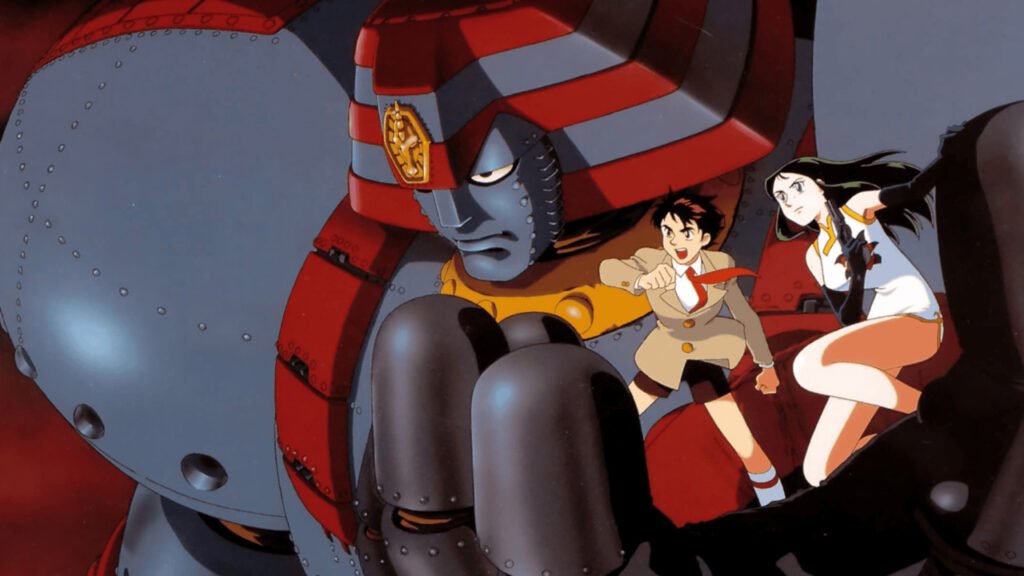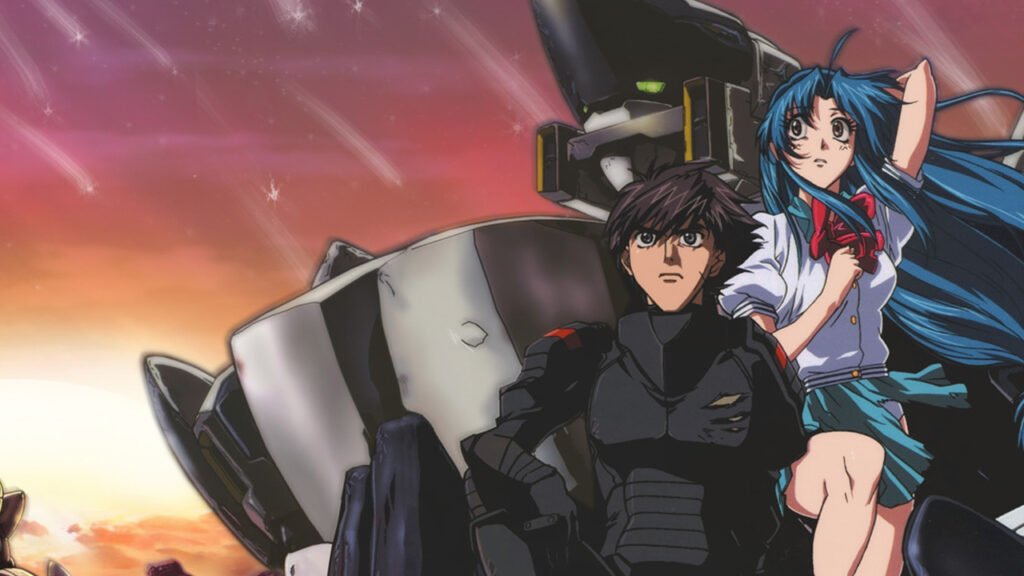When talking about mecha anime, Mobile Suit Gundam is always at the forefront of the discussion, as it quite literally popularised the genre back in the 80s. But it isn’t the only important series out there.
Because even before and after the popularity of Gundam, there have been a plethora of mecha shows that have amassed a dedicated fan following. Some of them delve deeper into the psychological themes of the genre, while some explore further into the exploits of politics and war.
Below we have listed a number of mecha anime shows that we think are worth checking out, if you are looking for shows outside the Gundam franchise.
Best Non-Gundam Mecha Anime
Getter Robot: Armageddon

The Getter Robot franchise is from an era when the mecha genre was leaning more towards superhero robots, rather than the aspects of war and politics. The original manga was written by Go Nagai of Mazinger Z fame, and illustrated by Ken Ishikawa.
The story of Getter Robot follows Prof. Saotome assembling a team of strong-willed teenagers to pilot Getter-powered jets that can be combined to form the Getter Robot, which has multiple variations.
The Robot is powered by the willpower of the three protagonists, Ryoma Nagare, Hayato Jin, and Musashi Tomoe. Originally designed for space exploration, the Getter Robot soon became humanity’s last standing hero against the reptilians of the Dinosaur Empire.
The franchise has seen several animated adaptations, including movies and television shows. If we had to recommend an enjoyable starting point for anyone trying to get in the series, then it would be the 1998 OVA Getter Robot: Armageddon.
Giant Robo: The Day the Earth Stood Still

Originally a manga series published in 1967 by the famous Mitsuteru Yokoyama, Giant Robot’s most famous adaptation was not actually as an animated show, but as a live-action tokusatsu show. When brought to the United States for airing, the show was renamed as Johnny Sokko and His Flying Robot.
Johnny’s original name in the source material was Daisaku Kusama, and the series followed his adventures with the ancient giant robot, whom he befriended along with a cast of other characters.
The story chronicles Kusama and friends trying to fend off the terrorist organization called the Big Fire (or BF) group, who are trying to use giant robots to take over the world.
There have been multiple animated adaptations of the Giant Robot franchise, the recent one being from 2007, titled GR: Giant Robot.
Our recommended viewing would be the 7-episode OVA Giant Robo: The Day the Earth Stood Still, which follows a different kind of conflict with the giant robot taking a back seat, away from fighting regular villains of the week from the original show.
Patlabor: The Early Days OVA

Patlabor is about police patrol robots known as ‘labors’. In the near future, heavy labor work has been automated with the help of giant robots, but malfunctions may happen with misused laborers going rogue. The Tokyo Metropolitan Police has employed a team of ‘Patlabor’ pilots whose job is to specifically handle accidents and terrorism around laborers.
Created by a group called Headgear, which involved famous names that contributed to the history of cyberpunk and sci-fi anime/ manga, including Masami Yuki, Mamoru Oshii, Kazunori Ito, Yutaka Izubuchi, and Akemi Takada.
Our main protagonist is Noa Izumi who is a Special Vehicle Section 2, Division 2 pilot, and an ardent fan of Patlabors, followed by a colorful cast of characters, each having their own sub-stories and traits.
Patlabor is a unique show among other mecha franchises, as it does not bother itself with war, politics, and super villains. The nature of the franchise is rather leaning towards slice-of-life and comes, mostly, with a focus on appreciating human relationships and the love for labor.
The franchise has several adaptations, movies, and even reboots, separated through timelines. A good starting point would be Patlabor: The Early Days original video animation series.
Gunbuster OVA

In the future, the alien race known literally as Space Monsters is out on a mission to scour the galaxy and eradicate humanity. In order to fend off this threat, humanity has built special giant robots that are mecha suits. But piloting them is not an easy task, as it requires individuals with sound athleticism and dexterity.
Gunbuster was the directorial debut of prolific mecha/tokusatsu director Hideaki Anno. The story follows Noriko Takaya, an individual who aims to become the best at piloting the Gunbuster mech, just like her father, who died fighting Space Monsters.
Noriko is recruited as a trainee pilot for her potential, but she must overcome the pressure of intense training as well as get along with her fellow cast of pilots, if she really wants to uphold her father’s legacy and become a strong Gunbuster pilot.
Even though it was made as a parody of media such as Top Gun and Aim for the Aces! The sports manga. Gunbuster has been able to earn its fan following over the years through its own merits, exploring themes of youthful perseverance.
Full Metal Panic!

Adapted from the light novel written by Shoji Gatoh with the same name, Full Metal Panic! is a romance-comedy mecha show. Following a military personnel named Sousuke Sagara, who is acting as an undercover bodyguard for the highschooler, Kaname Chidori, protecting her from enemy organisations.
Kaname takes notice of Sousuke’s comedic antics as a military fanatic trying to play a high schooler, she eventually comes to learn that Sousuke is actually trying to protect her from harm. The show explores the unfolding story spiraling into comedy and romance between the two characters.
The setting of Full Metal Panic! is in an alternate militaristic Earth having a different history from our real one, where existing countries have split into parts and wars are still ongoing. Human society has advanced far enough with technological research to have developed mecha suits known as Armslaves.
Full Metal Panic! was fully adapted into an anime series spanning multiple episodes, even movies, and a manga series, garnering a loyal fanbase over the years.
Neon Genesis Evangelion

Probably the most well-known franchise in this whole list, created by the director of Gunbuster. Follows the same story beats of a high school teenager piloting a mecha, but exploring more of the psychological side of the mecha genre, the impact that war and technology can have on the mental state of an individual.
Shinji Ikari is forcefully brought into the NERV organisation by his father’s orders to pilot the Evangelion mecha along with fellow individuals of his age. These weapons of mass destruction are the last line of defense for humanity, which has been on the brink of extinction multiple times due to the invasion of mysterious monsters known as angels.
Neon Genesis Evangelion’s popularity far exceeds common media knowledge all over the world, its influence extends over to other forms of entertainment such as video games, music, and even live-action films.
We would highly recommend watching Neon Genesis Evangelion if you are looking for a mecha show that deconstructs itself, exploring more philosophical themes around religion, such as Judeo-Christianity, and psychological concepts of Jung and Freud.
Gurren Lagann

The full title of the anime goes as ‘Tengen Toppa Gurren Lagann’, which roughly translates to ‘Heaven Piercing Gurren Lagann’. The show was created by the legendary GIANAX studio, and directed by Hiroyuki Imaishi, who would later go on to work on other popular shows such as Cyberpunk: Edgerunners, Promare, and Kill La Kill.
Gurren Lagann follows the story of Simon and Kamina who, like the rest of humanity, have been forced into subterranean isolation by the Spiral King, Lordgenome, who now rules the world. The duo discovers a mecha with a drill core, which they name Lagann.
This is what ultimately leads to the sparks of rebellion, which would ultimately converge into humanity fighting back against the empire of the Spiral King.
Gurren Lagann is widely considered the antithesis of another mecha show that we have already mentioned, Neon Genesis Evangelion. As both shows explore the same type of character arcs, coming to terms with loss and burden.
One celebrates optimism and becoming a dependable figure, while the other questions the integrity of human existence and leans more towards dread.
Watch Tengen Toppa Gurren Lagann. If you are looking for some insane mecha action coupled with mesmerizing sakuga animation by incredible animators from the now-defunct studio GAINAX.
The Big O

The Big O was created by studio Sunrise, who are known for the Gundam franchise, and was heavily influenced by another mecha show, which has already been mentioned in our list; Giant Robot.
Kazuyoshi Katayama, who was the main director for the show, also went on to work on Giant Robo: The Day the Earth Stood Still. Hence, the design of the Giant Robot and Megadeuses (mechs from The Big O series) looks quite similar to each other.
The story of The Big O takes place in a fictional domed city, where surviving humanity resides after ‘The Event’ destroyed everything else outside the dome. The whole establishment is controlled by the Paradigm Corporation, hence named Paradigm City.
The series explores themes of class dichotomy, as the more fortunate and rich reside in the pleasant part of the dome while the downtrodden have to make ends meet in the outskirts of the dome.
Giant Robots known as Megadeuses are a common part of life and have assimilated into society. The show follows a Megadeus with the titular name, Big O, piloted by the protagonist Roger Smith.
If you are looking for themes of noir and mystery in a mecha show that The Big O is a highly recommended viewing on our list.
The Vision of Escaflowne

The Vision of Escaflowne is a show that was created by Shoji Kawamori, who is famous for his contributions to the mecha genre, especially the Macross mecha series.
The anime is also known for having a timeless art style when it comes to the character designs. Contributed by the famous artist Nobuteru Yuki, known for series such as Ninja Scrolls and Record of Lodoss War.
The show is an isekai mecha anime following the adventures of Hitomi Kanzaki, a high schooler who gets transported into the fantastical world of Gaea. Hitomi discovers that she has latent powers and is the key to awakening the mystical Escaflowne mech, which is piloted by the King of Fanelia, Van.
With her newfound ability, she is thrown into the middle of a conflict as the Zaibach Empire is trying to take over the surrounding nations of Gaea.
The Vision of Escaflowne is fondly remembered by fans of perfectly blending elements of medieval fantasy and sci-fi mecha, with a pinch of shoujo themes inspired by series like Macross.
Brave bang Bravern!

Probably the most recently released addition to this list. Brave Bang Bravern! It is produced by Cygames Pictures with direction from Masami Obari, known for his contributions to franchises such as Fatal Fury and Bubblegum Crisis.
While the US and Japan are having their joint military exercise, our protagonists, Isami Ao and Lewis Smith, meet during this training and come face to face with a sudden attack from enemy mechs known as Deathdrives.
Now they must cooperate as soldiers to fend off this new threat, with Isami being the only individual who can pilot the Bravern mech that appears to be on their side.
The show earns its spot on this list for having the perfect blend of enthusiasm and action from the yesteryears of mecha shows, as well as a well-written story.
But most importantly, Brave Bang Bravern! earns its ardent fan following for having a unique mech named Bravern. Much more than just a giant robot, it’s an actual character having personality and a sense of humor, which extends to singing the opening theme song for the show.
